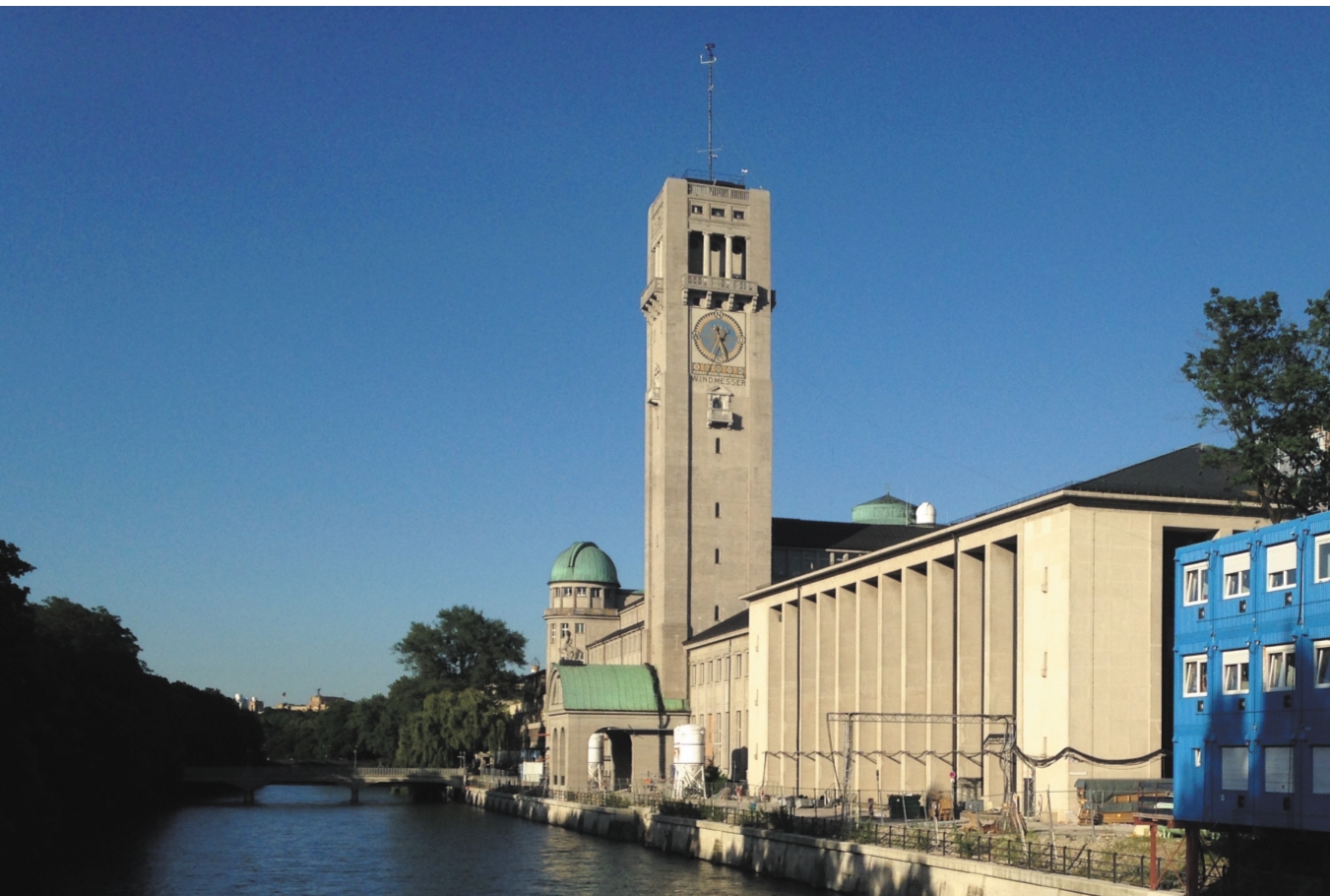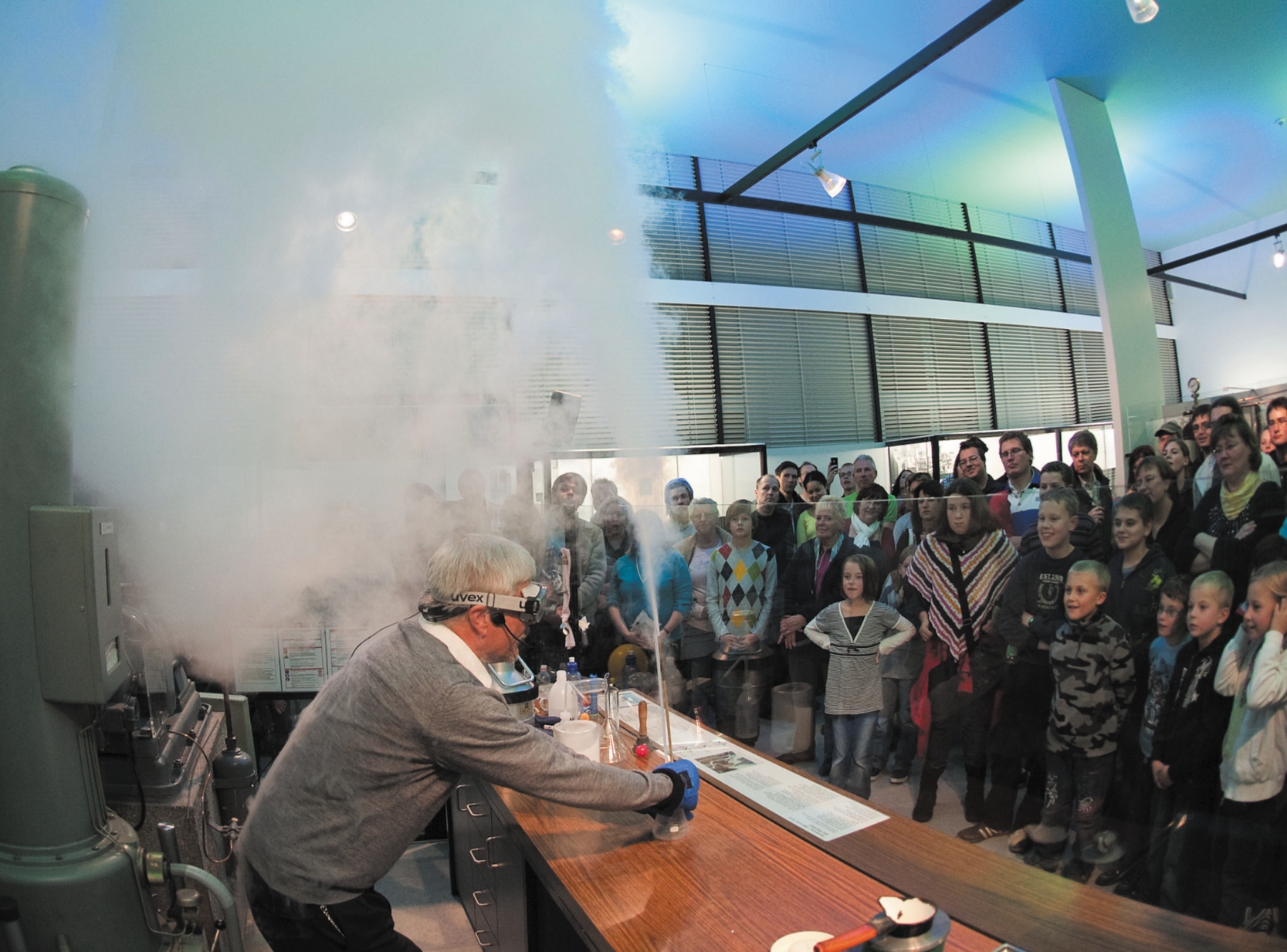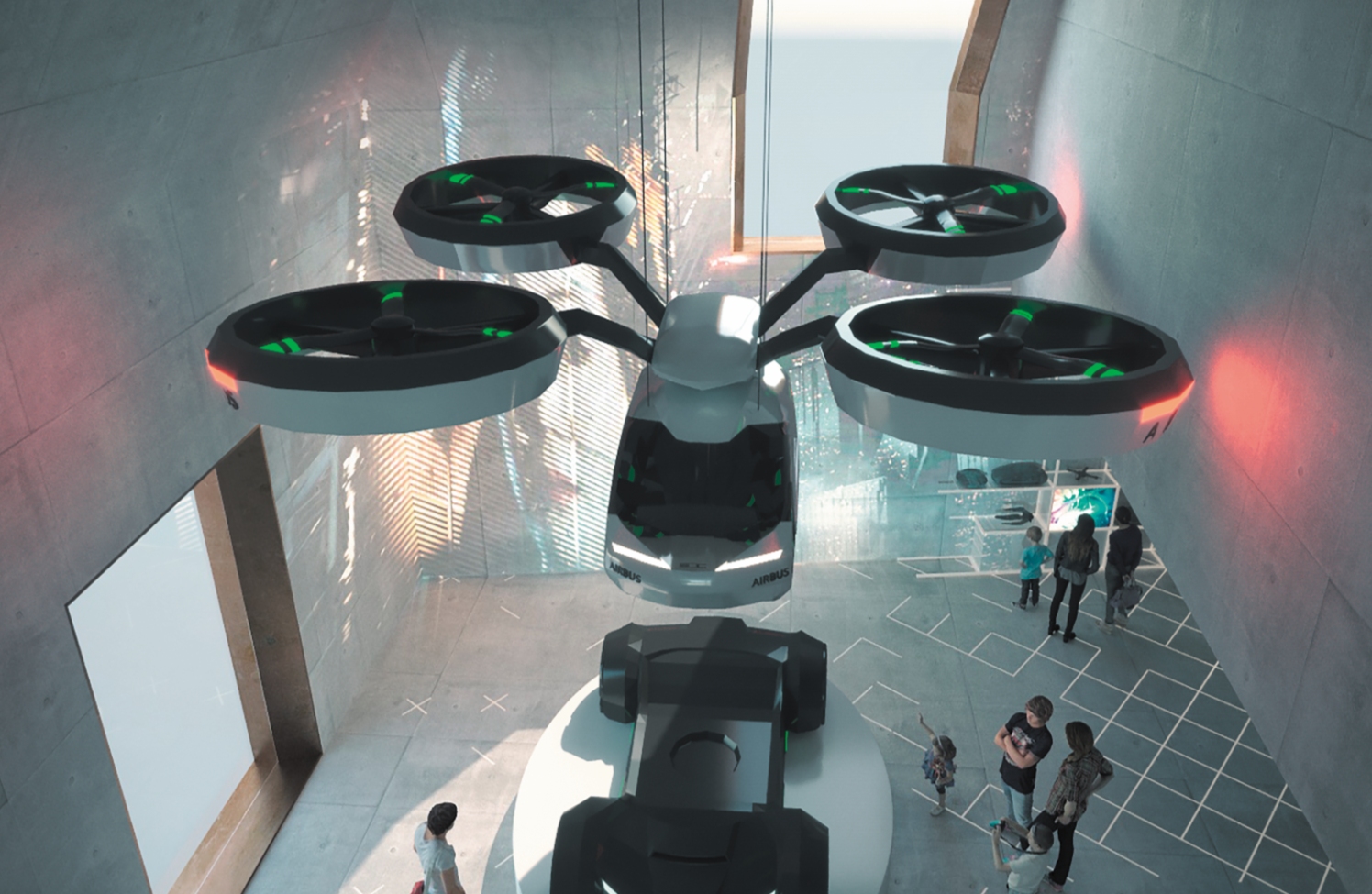Germany’s most visited museum struggles to complete renovations
DOI: 10.1063/PT.3.4268
At the Deutsches Museum in Munich, visitors can see a Wright Brothers’ Model A biplane from 1909, the Magdeburg hemispheres with which Otto von Guericke performed his pioneering vacuum experiments in the 17th century, and some 28 000 other emblems of progress. Since it opened in 1906, the museum has showcased and explained science and technology with an emphasis on advances that impact society. “We don’t show every Apple computer,” says museum director Wolfgang Heckl. “We show the first one, and the first iPhone, because they are iconographic of revolutions.”
Now the museum is in the midst of a head-to-toe overhaul. The renovations were officially launched in 2006, after local authorities said the buildings had to be updated to meet modern safety codes—or be shuttered. Among the upgrades are improved emergency egress and a €10 million ($11.4 million) skirt that extends 12 meters deep to bedrock to prevent water seeping into the basements.
As the museum implements those and other measures, it is taking the opportunity to modernize its exhibits, many of which are decades old. Most transformational is the museum’s overarching aim to present social context and engage the public in topics, some controversial, that have global implications. “Our museum wants to show the future of science and technology as well as the past,” says Heckl. “The whole idea of the new exhibitions is to provide information so visitors can discuss issues and form opinions. In a sense, we are becoming much more political.”
Financial morass
Renovations started on the roof and facade in 2011, and ramped up in 2015. They are scheduled for completion in 2025, the centenary of the museum’s move to its island site in the Isar River. The museum has raised €445 million for the renovation project, with 10% in donations from industry and the rest from the state of Bavaria and the German federal government. The funds were initially intended to cover the main construction work and new exhibitions, but it was clear from the get-go that it would be tight. At least another €150 million will be needed, Heckl says.

The Deutsches Museum in Munich is in the midst of a major makeover.
TONI FEDER

Unforeseen problems that stem from the building’s original construction, the financial collapse of the architectural firm hired to design the renovations, a worker shortage, and other sources of delay are pushing costs up even more. A perception of ineptness and obfuscation surrounding the cost estimates has created disgruntlement among the region’s policymakers, according to local news reports. On 25 June the museum’s board of directors gave Heckl and the management team until fall 2020 to come up with a detailed plan and budget for the full renovation.
The exhibit renovations are planned in two stages. Roughly half the museum’s 50 galleries are currently closed and scheduled to reopen in 2021, when the others are to close for makeovers. Unless more money is found soon, however, some of the renovations, and the reimagining and reopening of some galleries, will be delayed.
“Arguments for answers”
From its start, the museum featured not only a collection of historical objects but also hands-on experiments, which for the time was revolutionary. “Touching things in a museum!” says Heckl. “That was outrageous.” Dioramas ranging from less than a meter on a side to several meters make up a third pillar of displays at the Deutsches Museum. “They are much more fascinating than a video screen or multimedia,” says Andreas Gundelwein, who oversees the museum’s galleries. The dioramas are researched and crafted at the museum; each represents several thousand hours of work.
The museum became a model for similar institutions, such as the Museum of Science and Industry in Chicago, founded in 1933, and the San Francisco Exploratorium, established in 1969. The full collection of the Deutsches Museum comprises more than 100 000 objects. To view every exhibit would require walking about 18 kilometers. Some 1.5 million visitors a year tour the museum.
The Deutsches Museum has a research division on site and close ties with academia, and it also houses extensive science and technology archives and libraries. In recent decades the museum opened outposts in Munich on aviation and land transportation and a branch in Bonn that focuses on German research and technology.

A popular demonstration highlighting the characteristics and properties of liquid nitrogen will survive the Deutsches Museum’s renewal.
DEUTSCHES MUSEUM

One hall of the museum features an exhibition on nano- and biotechnology, where since 2009, scientists have conducted research in public view and answered visitors’ questions. It includes historical objects, such as a cardboard model of an early scanning tunneling image made by Gerd Binnig, who shared the 1986 Nobel Prize in Physics for inventing the scanning tunneling microscope. The exhibition is related to federally funded joint work with several local universities and other research partners and represents one way the museum supplements its income.
A nearby exhibit exemplifies the museum’s new head-on approach to controversial topics: Six images of faces protrude from a wall; they introduce themselves and launch into their views on genetic testing. A woman who works for a health insurance company says the results of genetic testing should be provided to insurers. A man with a rare genetic disease opposes testing because it could lead to abortions of fetuses with a condition such as his. Another man contemplates testing to plan a baby that could help provide an existing child with bone marrow transplants, and so on. The statements are read by actors and attributed to fictional people. The exhibit includes legal, ethical, and other information; surveys visitors about their opinions; and tallies the results.
In the same vein, many of the museum’s historical exhibits will be refreshed to include more social and historical context. The original signage next to a Messerschmitt Me 163, for example, touted the rocket-powered interceptor from World War II as a “masterpiece” of German engineering and praised it for its swept wings and tailless design, says aviation curator Andreas Hempfer. Not previously included were the facts that the plane was built by forced laborers, was dangerous to fly, and performed poorly in combat. Presenting the full story, says Hempfer, “is part of our greater focus to be more critical about technology and put it in its social context.”
Expanding context and scope goes beyond individual exhibits. The agricultural gallery, for example, has always featured farm machines and an idyllic Almhütte—an Alpine hut for small-scale farming. Those exhibits will remain, but they will focus on food production for the world’s growing population and feature information on satellite imagery and on social implications such as the distribution of wealth. Among the topics to be addressed are raising animals for slaughter, using chemical fertilizers and pesticides, and genetic engineering and other plant breeding methods.
“What does high meat consumption mean for the world? For the environment? For the visitor?” asks Helmuth Trischler, the museum’s head of research. The museum looks at how to present controversial topics, he says. “How do visitors respond to conflicting evidence? How do they tolerate scientific ambiguity?”
From the genetic testing exhibit, and from recent special exhibitions on renewable energy and on the Anthropocene, specifically human impact on Earth’s geology and ecosystems, museum researchers know that visitors like to engage. “We want to give arguments for answers,” says Johannes-Geert Hagmann, head of the museum’s curatorial department for technology. “What would you do if you were a policymaker?” (See also the interview with Hagmann about his career path, Physics Today online, at https://physicstoday.org/hagmann
The physics portfolio
The physics galleries are scheduled for updating in the second phase of the museum’s renovations and will happen only if more money comes through. But they are ripe for renewal, says physics curator Daniela Schneevoigt. Demonstration experiments date back to the 1960s, and “people walk through pushing buttons instead of learning from them.”
Schneevoigt plans to cull those experiments and to make the ones that remain more hands-on. She also plans to bring out from storage the resonators, mirrors, and other instruments that Heinrich Hertz used to study electromagnetic waves in the 1880s and original tubes, photographs, and other equipment used by Wilhelm Röntgen, who discovered x rays in 1895. And subject to approval from internal and external advisory boards, she’d like to replace the re-creation of Galileo’s workroom with a set of compact dioramas. She says she wants to “show how the lab environment has changed over time, and not just stress one single scientist but rather show how science is becoming more diverse, interdisciplinary, and international.”
The physics exhibition will also absorb the measurements gallery, which has been separate. Many of the historic instruments will be moved to storage, but a recent addition to the collection is already on display: a smooth silicon sphere that was used to measure Avogadro’s and Planck’s constants. The measurements informed new definitions of the mole and kilogram, which were adopted this past May.

A prototype vehicle, which on voice or eye-tracking command rises out of traffic, expands accessible travel space to a third dimension. Controlled by artificial intelligence, the removable capsule would detach from its chassis and land on a different one. It will be on display when the Museum of the Future, a branch of the Deutsches Museum, opens in Nuremberg in December 2020.
©ATELIER BRÜCKNER GMBH, 2018

“There are some hard choices,” says Trischler. The reopened museum will include only about 60% of its previous exhibits, he says. Still, the museum will remain true to its goal of telling stories about science and technology and connecting the interactive exhibits with the artifacts. Among the icons that will remain are a giant Foucault pendulum and a hanging Faraday cage in which a member of the museum staff sits safely during a seemingly alarming transformer discharge of up to 270 kilovolts.
The fate of a model mine depends on independently raising between €10 million and €20 million to bring it up to code. The zigzagging walk through the 400-meter-long mine is one of the most liked exhibits at the museum. Even so, several visitors commented that it could go in favor of exhibits that represent modern science and technology.
Hagmann is overseeing the revamping of the optics exhibitions, which will be divided into two parts. The first exhibition, slated to open in 2021, will cover from antiquity through 1930. The second will focus on quantum optics and will open in 2025. Funded externally by a joint grant to museum and university researchers, the quantum optics exhibition is part of the collaboration’s public outreach.
One highlight of the first optics exhibition will be a trio of dioramas, each roughly a cubic meter in size, that links scientists across history on the themes of light and sight; all three scenes are built around the topic of the camera obscura. The first scene shows philosophers in ancient Athens examining speckles produced by sunlight filtering through leaves. The second shows Cairo-based scientist Ibn al-Haytham and his experiments, in which light from a candle flame appears upside down after going through a slit in curtains. The third depicts Johannes Kepler in Dresden in the early 17th century, when the floating images produced by a large lens led him to his theory of visual perception.
As part of the renewal, the museum will digitize its collection. That includes putting images, videos, and documentation online. As an example, Trischler points to Konrad Zuse, who built the first fully operable programmable digital computer, the electromechanical Z3, in Berlin in 1941. In digitally bringing together his artifacts, laboratory notes, correspondence, papers from his company, and his library, says Trischler, “we get a view of the process that resulted in the computer.”
Museum of the Future
Concurrent with the renovations, the Deutsches Museum is preparing its new Museum of the Future, set to open in Nuremberg in December 2020. It is separately funded with €27.6 million, plus €7 million a year, as part of a mostly state-funded initiative to stimulate the economy and promote northern Bavaria.
The Nuremberg museum will focus on science and science fiction across five themes: body and mind, work and daily life, urban life, system Earth, and space and time. The exhibits, which will be changed at least every other year, will include prototypes of futuristic technologies and questions for discussion. The intended audience is people from ages 12 to 20. “For them, the future is most important,” says Gundelwein, who spearheads work on the new museum. An example is a 3D printer that uses human cells; the eventual goal is to print a human heart. The museum will update the printer, and the heart, as advances are made. The scientist who is developing the technology envisions such an instrument in every operating room, says chief curator Melanie Saverimuthu. “It is for the visitor to decide, Would you like this technology? Would you want to live forever?”
Visitors to the Museum of the Future may be surprised when personal messages and photos from their own smartphones appear on the museum walls. That will be an experiment, and it is in the final stages of obtaining legal clearance, says Gundelwein. “We hope the young people will use [our free wireless] until they detect their personal use on display. And we hope that will be the moment when they think about privacy issues.”
Both in the Museum of the Future and in the rethinking of the mother ship, “we want to introduce the interactions between technology and society and promote critical discussions,” says Gundelwein. “We are changing from a pure technology museum to a museum of technology and society.”
More about the Authors
Toni Feder. tfeder@aip.org
